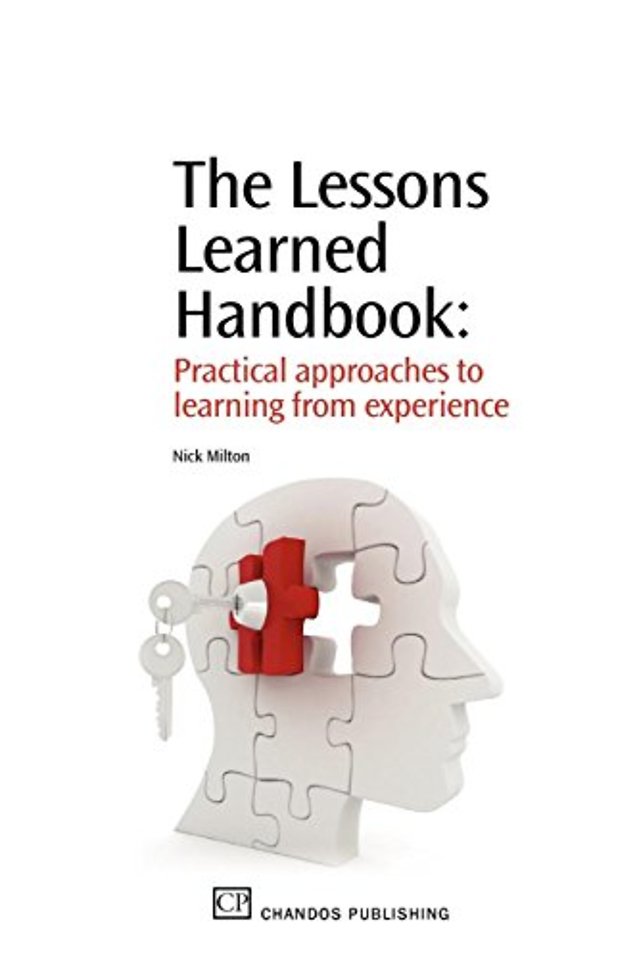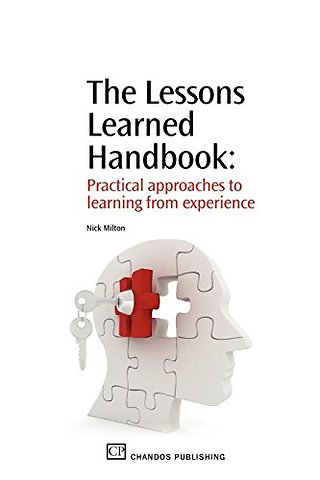<p>List of figures and tables</p> <p>Acknowledgements</p> <p>Preface</p> <p>Chapter 1: Introduction – learning lessons</p> <p>Learning as a basic instinct</p> <p>Learning in organisations</p> <p>Lessons learned systems in organisations</p> <p>How well do they work?</p> <p>The value of learning lessons</p> <p>Chapter 2: Elements of a lesson learning system</p> <p>Lesson learning approaches in the 15th century</p> <p>What is a ‘lesson learned’?</p> <p>The steps in learning a lesson</p> <p>Closing the learning loop</p> <p>Trial and error, or trial and success?</p> <p>Survey results</p> <p>Chapter 3: Lessons learned approaches</p> <p>Formal collect systems</p> <p>Informal collect systems</p> <p>Formal connect systems</p> <p>Informal connect systems</p> <p>A blended approach</p> <p>Chapter 4: Principles of lesson identification</p> <p>When to identify lessons?</p> <p>The principles of lesson identification</p> <p>Aiming for the ‘quality lesson’</p> <p>Examples of poor lessons</p> <p>Recommendation:</p> <p>Stories and lessons</p> <p>Self-identification of lessons versus lesson identification processes</p> <p>The questioning process – the metaphor of the tree</p> <p>Roles and accountabilities in lesson identification</p> <p>Chapter 5: Processes of lessons identified</p> <p>Post-project reviews or retrospects</p> <p>After action reviews</p> <p>Individual learning interviews</p> <p>Learning histories</p> <p>Evaluations and assessments</p> <p>Incident investigation</p> <p>Chapter 6: Writing down the lessons</p> <p>Each lesson stands alone</p> <p>The lesson needs to be easy to follow and well structured</p> <p>How much context?</p> <p>Who is the audience?</p> <p>Attachments</p> <p>Quality assurance and validation</p> <p>Lessons must lead to action</p> <p>Chapter 7: Taking action</p> <p>Will there always be an action?</p> <p>What sort of actions are needed?</p> <p>How do you decide the action?</p> <p>Who assigns the action?</p> <p>Escalating the action</p> <p>Closing lessons</p> <p>Chapter 8: Process ownership and process update</p> <p>Who owns the processes?</p> <p>Local vs company process owners</p> <p>The role of the process owner</p> <p>Engagement with the learning cycle</p> <p>Lessons workflow</p> <p>Validation and escalation</p> <p>Documenting processes</p> <p>Chapter 9: Ensuring lessons and updated processes are re-applied</p> <p>Broadcasting new lessons and process improvements</p> <p>Process improvements and training</p> <p>Process review as part of operations</p> <p>Chapter 10: Technology to support lesson learning</p> <p>Lesson repositories</p> <p>Knowledge libraries</p> <p>Publish and search technology</p> <p>Tagging</p> <p>Chapter 11: Sharing and seeking the unwritten lessons</p> <p>Communities of practice</p> <p>Peer assist</p> <p>Baton passing</p> <p>Knowledge handover</p> <p>Promoting conversation</p> <p>Chapter 12: The governance of lesson learning</p> <p>A governance framework</p> <p>Make corporate expectations clear</p> <p>Lesson learning systems</p> <p>Monitoring and measurement</p> <p>The supporting organisation</p> <p>Chapter 13: The principles and processes of safety investigations</p> <p>What happened and why?</p> <p>The investigation process</p> <p>The final report</p> <p>Chapter 14: Learning lessons in networks at Mars, Inc</p> <p>Learn from where we are</p> <p>Learn from what we know</p> <p>Learn from the past six months</p> <p>Formalising the learning</p> <p>Summary</p> <p>Chapter 15: Wikis as part of a learning system; a conversation with Peter Kemper</p> <p>Chapter 16: How not to learn lessons</p> <p>Chapter 17: Conclusions</p> <p>Index</p>

